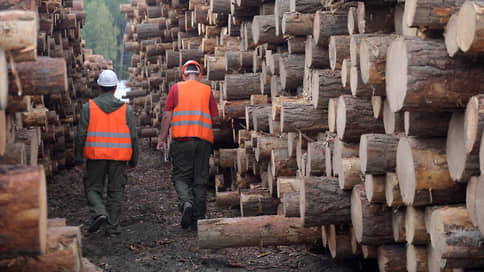In the first quarter, forest shipments grew by rail

Railway transportation of timber industry in Russia at the beginning of the year showed growth. But if the growth in the domestic market was stable, despite logistics difficulties due to a warm winter, then in the case of export it is more explained by the low base of last year. Due to low prices and high transport expenses, supply abroad from part of the regions became unprofitable, market participants indicate.
Shipment of forest and lumber by rail, including container transportation, in the first quarter of 2025 increased by 3% year, to 7.7 million tons, Kommersant reported in the Analytical Center Transla. The internal transportation of wood for processing increased by 4%, to 4.8 million tons, despite the difficult export due to the thaw due to abnormally warm weather in many regions, experts indicate. At the same time, the limitations of wood supply due to warm winter contributed to an increase in prices for a pilot and plywood riding by an average of 10% compared to the December of 2024, they add.
Loading of lumber for export over this period increased by 5%, to 2.2 million tons, round forest – decreased by 13%, to 0.4 million tons. The total loading of these cargo increased by 1%. But, they note in Transles, the dynamics is due to the low base of last year, and compared with the first quarter of 2023, export loading decreased by 8%.
The key recipient of forest cargo remains China. According to Transles, in the first quarter the country purchased 1.6 million tons of lumber and 0.4 million tons of round forest from the Russian Federation, which is 0.4% and 10% less than a year earlier. Experts explain that Chinese consumers prefer the purchase of unprocessed wood, which is why the share of the Russian Federation, which limited the shipment of this type of product, continues to decline in the Chinese market.
According to Russian Railways, the loading of forest cargo for three months increased by 0.1%, to 7 million tons. In March alone, the transportation of forest goods increased by 6.3%, to 3.6 million tons, including 1.5%, to 1.3 million tons, in export report and 8.4%, up to 2.1 million tons, in the domestic Russian. The transportation of forest goods in containers in March increased by 0.4% year by the year, to 51.4 thousand TEU.
Translae notes a general decrease in demand for LPK products due to the slowdown of real estate markets of key countries: China, USA, Europe, Japan. Subsequently, US duties may affect demand in China, analysts say. As explained in Transles, low demand for wood leads to increased competition between supplier countries, especially for the PRC market. In the Chinese real estate market, a slight improvement in the conjuncture is maintained, but the accumulated reserves of non -exposed objects are seriously pressed on the sector, they indicate in Transles.
Kommersant sources in companies indicate that quotes for finished products of the LPC in the domestic market and in export areas remain low-up to 40% relative to 2021, and the supply of a number of enterprises of the north-west abroad is unprofitable. Transles notes that in the Arkhangelsk region the costs of transportation by water transported by 20%, and movement along some rivers is limited. So, forestryman indicate the lack of dredging work on the North Dvina River. Also on the market they note the increase in costs for railway transportation and a shortage of rolling stock.
The head of the Committee of the Arkhangelsk Legislative Assembly, Alexander Dyatlov, says that regional enterprises were forced to reorient for railway transport, which led to an increase in the terms of circulation of containers and the time of receipt of revenue, which also decreased. In this regard, he considers it necessary to approve subsidies for sea transportation from the ports of the North-West and an increase in compensation for expenses for railway transportation. The head of the Ministry of Industry and Trade, Anton Alikhanov, in April, at a meeting of the LPK, said that regulators will look for an opportunity for additional subsidizing transportation costs, recognizing that « it will be quite difficult. »
The Segezha Group told Kommersant that the northwest direction is becoming more and more relevant in the conditions of the restrictions of the eastern training ground and unstable throughput of the southern routes. As noted in the company, taking into account the geographical remoteness of production assets and high logistics load, the subsidy will ensure the predictability of supply and maintain competitiveness in foreign markets. The group added that they work on expanding the geography of supplies and expect growth relative to 2024, but much depends on the economic situation, the construction season, the opening of new markets and other factors.







